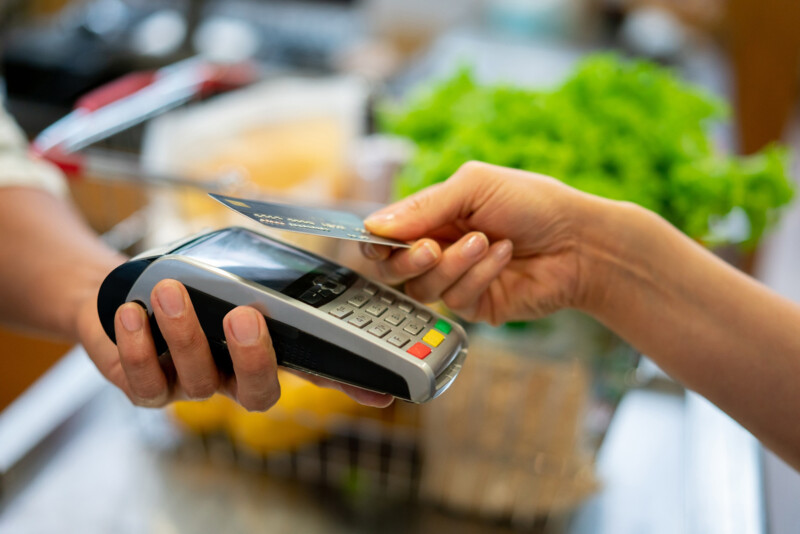La progression rapide de l’inflation pousse les consommateurs à se tourner de plus en plus vers le paiement fractionné. S’il était jusqu’ici réservé aux achats plus onéreux, il commence à être utilisé pour les courses alimentaires et le carburant, comme c’est d’ores et déjà le cas aux États-Unis, en Australie et au Royaume-Uni.
Fintechs et investisseurs se réjouissent de l’élargissement du marché aux courses du quotidien
Le paiement fractionné, ou « Buy Now Pay Later » (BNPL), connaît un succès grandissant. Dans certains pays frappés par une hausse des prix spectaculaire, comme le Royaume-Uni, l’Australie et les États-Unis, le recours au paiement en plusieurs fois n’est désormais plus réservé aux achats exceptionnels : il sert également à régler les courses alimentaires et le carburant.
Les fintechs et les investisseurs ont rapidement saisi les nouvelles opportunités offertes par la progression de l’inflation et ses conséquences sur le paiement fractionné. Ainsi, la fintech suédoise Klarna, spécialiste du Buy Now Pay Later, a noué un partenariat avec les compagnies pétrolières américaines Texaco et Chevron pour permettre à ses clients de régler le montant de leur plein de carburant en plusieurs mensualités.
La fintech australienne Fupay a signé un contrat avec les chaînes de supermarchés IGA Marketplace et Foodworks, ainsi qu’avec la compagnie United Petroleum pour proposer le paiement fractionné des courses alimentaires et du carburant.
La fintech Affirm a quant à elle lancé une carte de débit rattachée à son offre de paiement fractionné, permettant de régler les achats du quotidien, et tout particulièrement les courses alimentaires, en plusieurs fois. Le succès de cette carte de débit a attiré l’attention des investisseurs, qui voient dans ces nouveaux usages un élargissement du marché du paiement fractionné.
Un risque accru de surendettement
Toutefois, le recours au paiement fractionné pour régler ses courses alimentaires n’est pas du goût de tous. En France notamment, plusieurs acteurs du crédit y voient un risque accru de surendettement. Un risque d’autant plus grand en pleine période inflationniste.
En Europe comme aux États-Unis, au Royaume-Uni ou en Australie, les autorités financières surveillent attentivement les acteurs du paiement fractionné et entendent bien encadrer davantage cette pratique, qui n’est actuellement pas soumise aux mêmes règles que le crédit à la consommation.
Le paiement fractionné n’est pas non plus pris en compte dans le calcul de l’endettement, et nombreux sont les consommateurs à y recourir sans même réaliser qu’ils contractent un crédit. D’après une étude menée par la Woolard Review pour la FCA, 25 % des consommateurs utilisant le paiement fractionné ont moins de 25 ans, et 50 % sont âgés de 25 à 36 ans.
Les commissions de retard de paiement sont particulièrement élevées, et fournissent une part importante de leur revenu aux acteurs du Buy Now Pay Later. Ainsi en 2020, Klarna a réalisé 834 millions de dollars de chiffre d'affaires grâce aux seules commissions de retard, qui avaient alors augmenté de 47 % sur un an. Pour la fintech australienne Afterpay, les commissions de retard représentaient en 2020 environ 14 % de ses revenus.
Les acteurs français du paiement fractionné ne semblent pas, pour l’heure, enclins à proposer des solutions de BNPL à leurs clients pour le règlement des courses alimentaires. La fintech Django, filiale de la Banque Postale, est la dernière arrivée sur le marché. Elle se démarque par sa volonté affichée de protéger ses clients du surendettement, en les empêchant de dépasser le seuil de 2 paiements fractionnés sur une période de 30 jours glissants. Elle propose même des services élaborés conjointement avec l’association de lutte contre le surendettement Crésus, avec laquelle elle a établi un partenariat.
